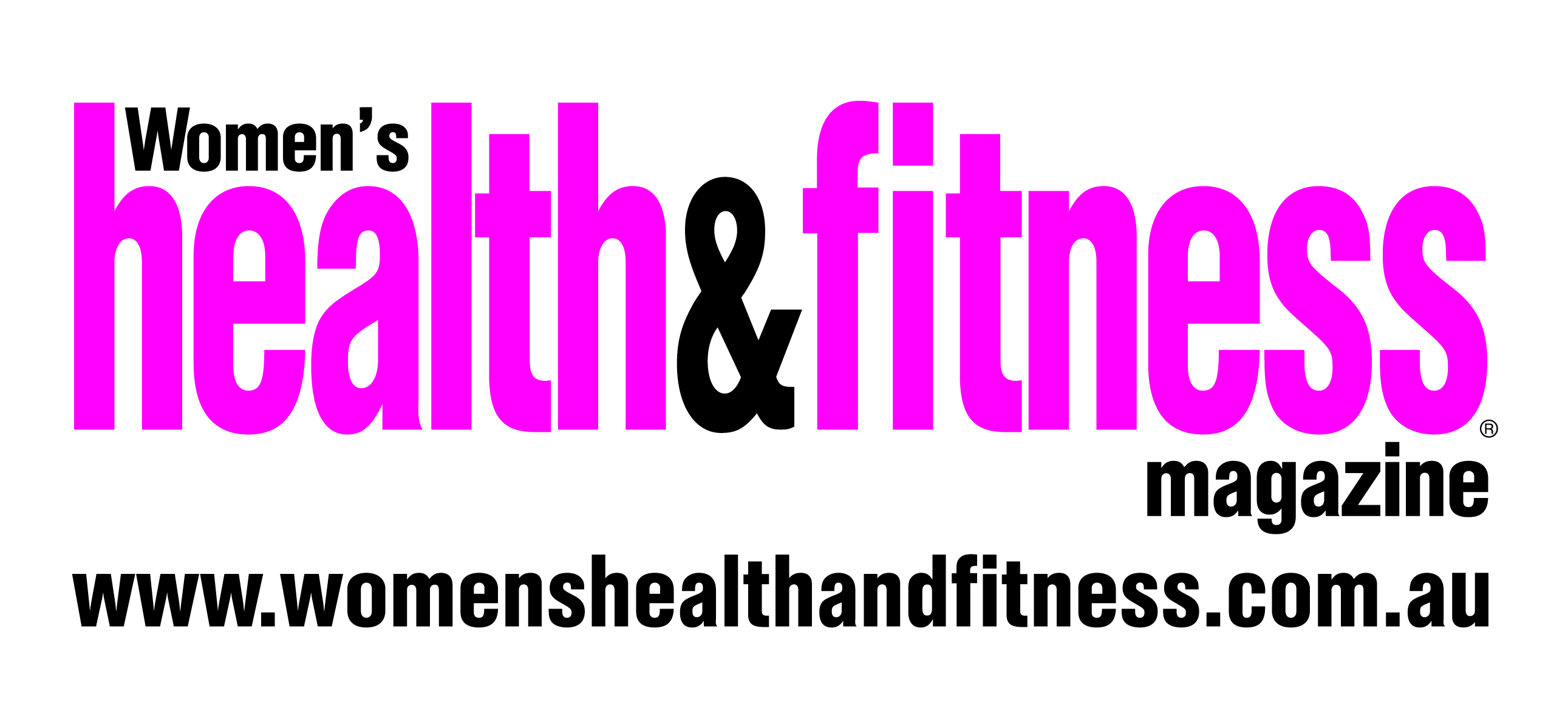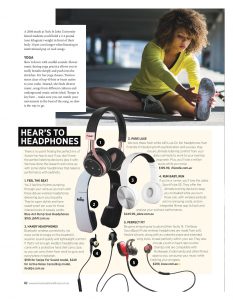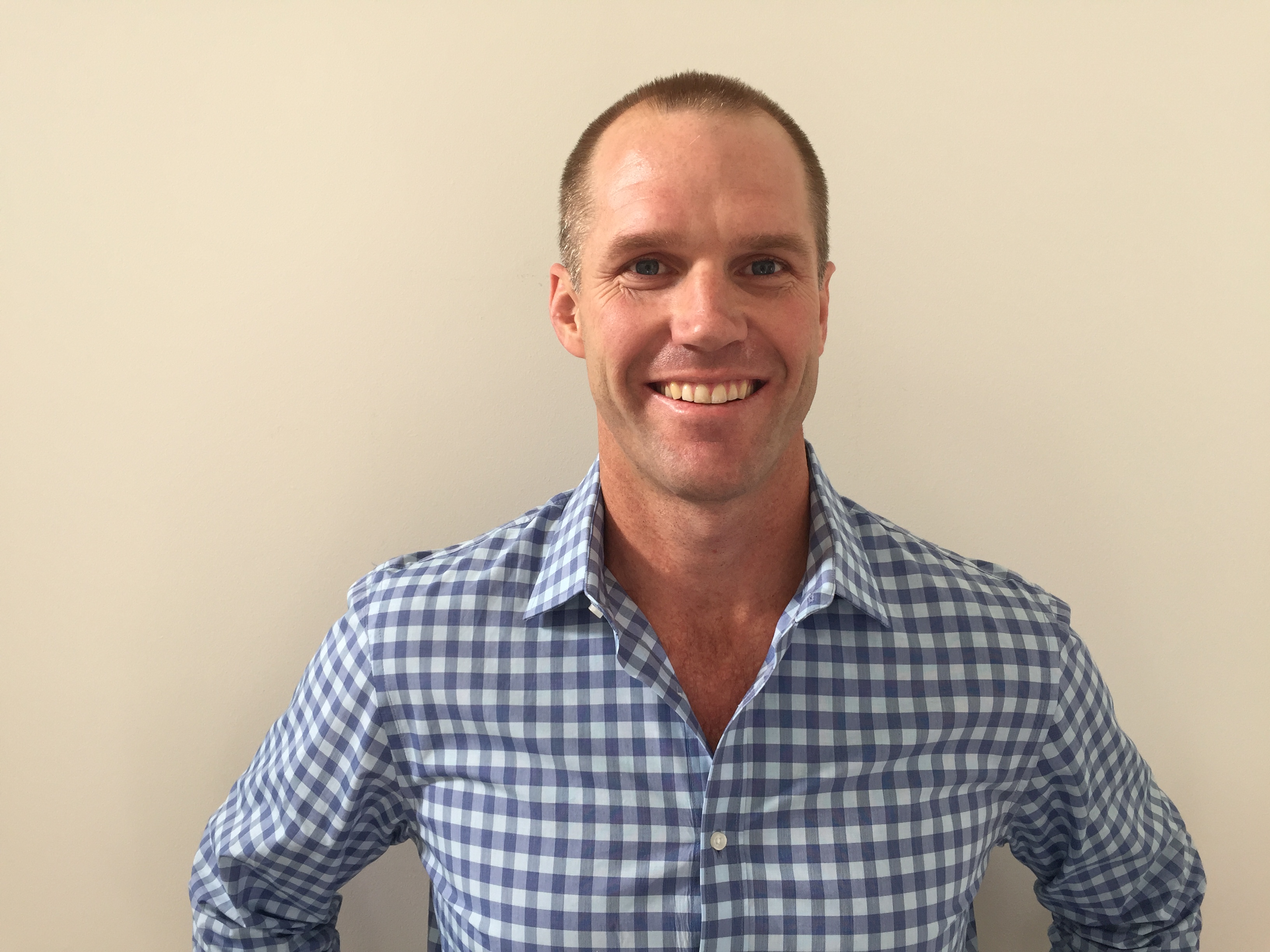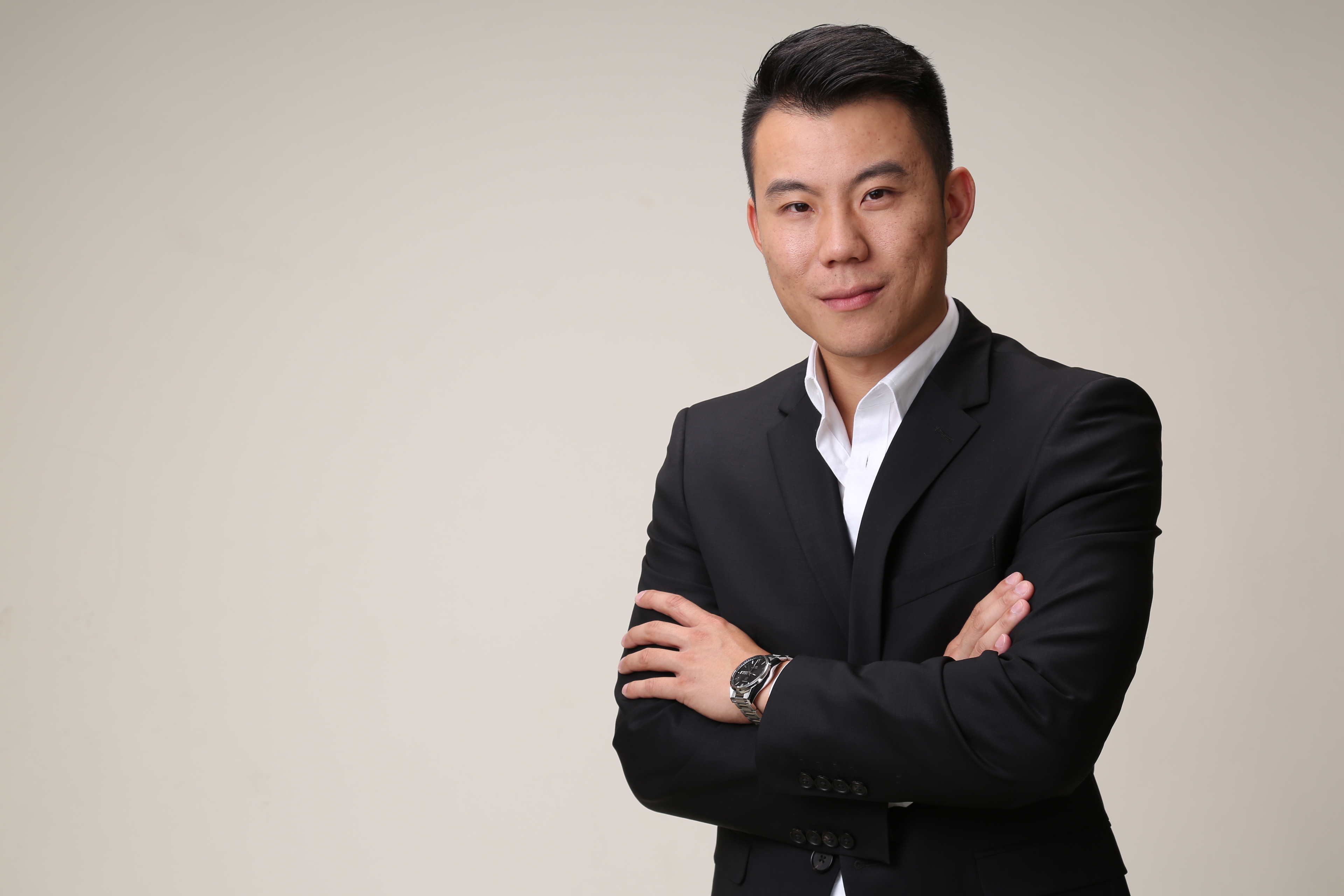They lead retail empires and technology powerhouses. They employ thousands of Australians and inspire countless others. They are hardworking, dedicated and passionate.
They are Australia’s top female entrepreneurs.
Each year SmartCompany publishes its list of top female entrepreneurs to coincide with International Women’s Day on March 8.
This year’s list features several exciting new faces, including Envato co-founder Cyan Ta’eed and fitness entrepreneur Michelle Bridges, as well as women who have long been at the forefront of Australia’s business community – and who continue to inspire.
SmartCompany’s annual list of top female entrepreneurs is ranked according to the revenue of their business.
This year, the combined revenue of the businesses on the list is $10.67 billion, up $200,000 from last year.
Wherever possible, revenue figures have been provided by the entrepreneurs themselves.
If not, SmartCompany has relied on publicly available sources, industry contacts or internal estimates. An asterisk shows when revenue has been estimated.
Here are SmartCompany’s top female entrepreneurs for 2016:
1. Katie Page
Company: Harvey Norman
Established:1982
Revenue: $2.71 billion (with Gerry Harvey)
Katie Page began working as an assistant at Harvey Norman in 1983 and has been chief executive since 1999 of a company with almost 200 stores in Australia and 86 stores overseas. Harvey Norman Holdings encompasses stores and franchise of Harvey Norman, as well as furniture brands Domayne and Joyce Mayne.
Harvey Norman’s revenue of $2.71 billion for 2014-15 comes from company operated sales revenue (not including franchises), as well as other venue and income items. The ASX-listed company, which is controlled by Page and husband Gerry Harvey, also has an estimated $2.32 billion in property portfolios.
Harvey has previously referred to Page as “the mastermind behind it all” in media interviews. Page is also a director at The Retail Council and the Trustee of the Sydney Cricket and Sports Ground Trust. Page also recently signed Harvey Norman as naming right sponsors for the first all-female Bathurst 1000 entry since 1998.
2. Gina Rinehart
Company: Hancock Prospecting
Established:1955
Revenue:$2.04 billion
Mining magnate Gina Rinehart has slipped to second place in SmartCompany’s list of top female entrepreneurs, after previously hanging on to first place on the annual list since 2012.
Mining had a tough year in 2015 and Hancock Prospecting did not escape impact. Weak commodity prices have contributed to revenue slipping more than 22% to $2.04 billion in 2014-15 according to Business News. Although there was a 14% increase in shipments at the half-owned Hope Downs mine, the fall in iron ore directly impacted on profits.
Much has changed in the past year as Rinehart is no longer Australia’s richest person, having been unseated by reclusive American heiress and Australian resident Blair Parry-Oaken on Forbes’ annual Rich List. Rinehart’s personal net worth is estimated by Forbes’ to be $9.4 billion.
3. Vicky Teoh
Company: TPG
Established: 1992
Revenue: $1.27 billion (with David Teoh)
Vicky Teoh founded a computer hardware retail business Total Peripherals with husband David Teoh in 1992 and that company continues on as one of Australia’s largest telecommunications providers. The Teohs remain the biggest shareholders in TPG with a combined stake of 35.69%, or more than 291 million shares.
TPG recorded a 31% increase in revenue, from $970 million to $1.27 billion, in the 2014-15 financial year. The biggest gains for TPG have been taking acquisition of internet provider iiNet Group in September. Now combined, the telcos provide broadband services to over 1.8 million subscribers and we’ll be watching closely how this impacts on TPG’s revenue in the next six months. TPG also recently stuck a dual agreement with Vodafone, including a major dark fibre transmission network expansion and migration of TPG’s mobile customer base to the Vodafone network.
4. Lesley Gillespie
Company: Bakers Delight
Established:1980 (becoming a franchise in 1988)
Revenue: $619 million (with Roger Gillespie)
The Gillespies have taken their “baked today sold fresh that day” philosophy and built a chain of more than 700 bakeries in Australia, New Zealand and Canada (as COBS Bread). An estimates 2 million customers stop into Bakers Delight stores every week to pick up their bread.
Bakers Delight began with a single Hawthorn bakery back in 1980, which by 1988 had grown to 15 bakeries all owned by the Gillespies. Moving into franchising proved to be a winning move for the couple, with revenue increasing from $585 million to $619 million last year.
Gillespie previously worked as a teacher, with a bachelor of science degree from Monash University. She has an Order of Australia award for her support of charitable and sporting organisations.
5. Maxine Horne
Company: Vita Group
Established: 1995
Revenue: $601.4 million
Maxine Horne has more than 25 years experience in the telecoms and technology industry, having established one of the first mobile phone stores Fone Zone back in 1995. Vita Group celebrated its 20th birthday last year with a 34% increase in revenue for the 2014-15 financial year.
In the 2015 annual report, Horne reiterated her “simple formula” business philosophy for looking after team members to create a positive atmosphere for customers.
“Twenty years ago, when I founded this business, I knew that we needed to stand out from the crowd – and we have certainly done that,” she said.
“The key ingredient for our success has always been our people, from the very beginning through to today.”
Horne is known for her philanthropy, last month announcing a company commitment to allocating 1% of the Vita Group’s annual net profit after tax to charity through the Vita Foundation.
6. Naomi Milgrom
Company: ARJ Group
Established: 1939
Revenue: $490 million*
Naomi Milgrom is chief executive officer of the ARJ Group, which is the parent company of retail chains Sussan, Suzanne Grey and Sportsgirl.
Recognised for her ongoing contributions to the fashion, art and retail industries, Milgrom has previously been named one of Australia’s top 25 business leaders and in 2009, was named a Champion of Entrepreneurship.
Speaking at last year’s Retail Futures Forum in Melbourne, Milgrom recognised the increased pressure on bricks-and-mortar retail stores, as reported by Fairfax.
“The second issue that’s developing is that the internationals are pushing prices down, which is going to cause some hardship. And I think with the dollar sitting where it is, that’s going to cause even more hardship,” she said.
7. Yenda Lee
Company: Bing Lee
Established:1957
Revenue: $490 million*
Yenda Lee is the chair and public face of electronics retailer Bing Lee, which was founded by her late husband businessmen Ken Lee and his father Bing Lee. Bing Lee was started in the late 1950s in Fairfield, Sydney, and now has around 40 stores in New South Wales and Victoria.
Yenda Lee continues to run Bing Lee with her son Lionel and dedicated team as a family business, treating all staff, suppliers and customer as family. The company has an annual turnover of $490 million according to The Border Mail.
8. Janine Allis
Company: Retail Zoo
Established:2000
Revenue: over $350 million
The last twelve months have been hectic for Janine Allis, who is continuing to grow Retail Zoo – the parent company to Boost Juice – as well as featuring as a judge on Channel 10’s Shark Tank.
Allis continues to be active in growing the Retail Zoo business and has previously told SmartCompany that focus and persistence are imperative to business success.
“Your business journey might take very different routes but you have to just keep at it like a dog with a bone,” she said.
“Then you will come out on top.”
Among her Shark Tank investments, Allis now owns a 30% stake in food delivery service The Dinner Ladies, a 10% stake in the Scrubba Washbag and a 35% stake in bassinet and pram canopies Flybabee.
9. Charlotte Vidor
Company: Toga Group
Established:1963
Revenue: $285 million* (with Ervin Vidor)
Charlotte and Ervin Vidor founded hotel business Toga Group in 1963 after migrating to Australia from Poland and Hungary.
The company has transformed into a property empire that a number of hospitality brands including Adina Apartment Hotels, Vibe Hotels, Travelodge Hotels, Rendezvous Hotels and Medina Apartment Hotels. The Toga Group’s revenue was estimated to be $285 million in 2013.
10. Sue Hollis
Company: TravelEdge
Established:2000
Revenue: $250 million*
Sue Hollis has an extensive background in travel, having worked for both British Airways and Qantas prior to co-founding TravelEdge in 2000.
Hollis has previously told SmartCompany travel is am industry with tight margins and that staff culture is key to the TravelEdge business.
“It’s the key driver behind everything we do,” she said.
“We hire and fire on values. Values fit is equally important, if not as important, for us as a technical fit. That, for us, is critical.”
11. Lorna Jane Clarkson
Company: Lorna Jane
Established:1990
Revenue: $200 million* (with Bill Clarkson)
Lorna Jane Clarkson founded activewear brand with husband Bill Clarkson in 1990, leaving her job as a dental therapist and part-time aerobics instructor.
Today, operates up to 217 stores in Australia, the US, Austria, France, South Africa and the UK.
Lorna Jane has become renown for its social media presence, with more than 1.1 million Facebook fans and more than 600,000 followers on Instagram. However, the activewear company has also copped flak on social media in the past year for advertisements for fit models and been dogged by a bullying lawsuit from a former employee.
The bad press has taken its toll on Clarkson who in an interview last year described the affect of the criticism.
“When you build a brand that is so much about you and who you are as a person, it hurts,” she said.
12. Iris Lustig-Moar
Company: Lustig & Moar
Established:1971
Revenue: $171 million*
Property developing business Lustig & Moar was established in 1971 by Iris Lustig-Moar’s late father Ted Lustig and former husband Max Moar.
Both Iris Lustig-Moar and Max Moar remain directors of the company and have been responsible for high end projects like the Grand Hyatt Hotels in Melbourne and Hong Kong, as well as the Chatswood Chase in Sydney.
13. Gillian Franklin
Company: The Heat Group
Established:2000
Revenue: $130 million
The Heat Group was established in a coffee shop back in 2000 after founder Gillian Franklin secured consumer products giant Proctor & Gamble as a client in just three weeks. Originally from South Africa, Franklin married an Australian and worked for a number of major cosmetics companies like Revlon and Australis before starting her own wholesale business.
The Heat Group sells 11 million pieces of stock each year, employs 170 employees and has annual turnover of around $130 million. One Heat product is sold in Australia every 2.8 seconds.
Franklin previously told SmartCompany leaving the corporate world to start her own business was both exciting and scary.
“There was a huge amount of anxiety; I had been in a very senior role for a long time, with the salary package and comfort and security of corporate life,” she said.
“I learnt very quickly different skills and expertise are needed when you own your own business.”
14. Diana Williams
Company: Fernwood
Established:1989
Revenue: $106 million*
Diana Williams is credited with ushering in a major change in the Australian fitness market, after recognising a desire among women to have access to their own workout spaces.
Since founding the women-only gym chain Fernwood in 1989, Williams’ business has grown from a single site in Bendigo, Victoria, to almost 70 fitness clubs situated in every Australian state that offer more than 3000 fitness classes every week.
15. Sarina Russo
Company: Sarina Russo Group
Established:1979
Revenue: $106 million
Sarina Russo founded her own typing school with just nine students in 1979.
Today, the Sarina Russo Institute sees 5000 students graduate annually and Sarina Russo Job Access places 25,000 people into employment. The Sarina Russo Group now employs over 1100 people.
Russo previously told SmartCompany in life you should wish for either inspiration or desperation, and the latter was what pushed her.
“I was pretty desperate. I had $2600 in my name. I took out an overdraft for the business of $3000, which had a security on it of $2000,” she said.
“You have to be prepared to take a leap of faith and back yourself.”
16. Jo Horgan
Company: Mecca Brands
Established:1997
Revenue: over $100 million*
Mecca Brands has come a long way since its first South Yarra cosmetics store. Jo Horgan has grown her concept for a cosmetics haven into 67 stores and is reported to be planning to expand a further 20 stores this year.
Mecca is estimated to hold 12% of the $4 billion cosmetics and beauty sector in Australia. The business includes the brands Mecca Cosmetica, Mecca Maxima and Kit Cosmetics, as well as an thriving online business.
17. Barb di Corti
Company: Enjo
Established:1994
Revenue: over $100 million*
Austrian-born Barb Di Corti began selling ENJO cleaning products in Australia 1994 after discovering how the environmentally friendly products helped her asthmatic son.
Today, the entrepreneur leads she a cleaning products empire that allows more than 1000 “ENJOpreneurs” to work flexibly as consultants selling ENJO products.
ENJO is also committed to a Zero Waste movement, claiming that switching to ENJO can help reduce up to 50% of household waste.
18. Carolyn Creswell
Company: Carman’s Fine Foods
Established:1992
Revenue: $100 million
Former Telstra Business Woman of the Year Carolyn Creswell has made a fortune from people’s love of muesli.
The entrepreneur started her business with a $2000 investment back in 1992 and Carman’s Fine Foods is now turning over around $100 million with products sold in more than 30 countries.
So what’s her formula for success?
Stay focused on the bigger picture.
“You need to be organised, get the clutter out of your life so you can focus on strategy and risk,” Creswell previously told SmartCompany.
19. Kristina Karlsson
Company: kikki k
Established:2001
Revenue: $60.9 million
Stationery queen Kristina Karlsson started kikki k 15 years ago and since that time has managed to turn her business into a household name.
The company has 80 stores across Australia and sells its signature Swedish stationery and gifts to customers in 137 countries. According to Fairfax, kikki k returned to profit for the first time in four years in 2015, with sales increasing by 28% to more than $60 million.
Kikki k recently appointed former David Jones chief executive Iain Nairn to oversee the brand’s international expansion, including in the UK.
20. Naomi Simson
Company: RedBallon
Established:2001
Revenue: $60 million
Naomi Simson founded experience and rewards company RedBalloon back in 2001.
Today, Simson is involved in many businesses, including RedBalloon offshoot Redii and a number of other companies she invested in as one of the judges on Shark Tank Australia.
Simson also writes a popular blog where she shares tips and advice relating to company culture, as well as musings from her time in business, and is the author of a book called Live What You Love.
21. Penny Spencer
Company: Spencer Group
Established:1998
Revenue: $60 million
Penny Spencer started working in the travel industry when she was 19, working her way up before cashing in some Telstra shares and starting Spencer Travel in 1998.
Today, the corporate travel agency employs more than 50 people and turns over more than $60 million.
Spencer is also renown for rewarding longstanding employees with a one-carat diamond.
22. Michelle Bridges
Company: Michelle Bridges
Established:2010 (12 Week Body Transformation)
Revenue: $60 million
Fitness entrepreneur Michelle Bridges shot to fame after staring as one of the trainers in Channel 10 show The Biggest Loser.
Since she first appeared on the show, Bridges has launched a range of products, including the ONEActive clothing range stocked in Big W stores, several books and DVDs and popular diet and exercise program 12 Week Body Transformation.
Her numerous brands turned over around $60 million in 2014, according to BRW.
Bridges was also awarded the NSW excellence in women’s leadership award last year.
23. Cyan Ta’eed
Company: Envato
Established:2006
Revenue: over $50 million (with Collis Ta’eed)
Cyan Ta’eed is the co-founder of 10-year-old digital marketplace Envato, which employs more than 170 people.
To date, Envato users have earned more than $300 million and in 2014, turned over more than $50 million. On top of all this, Envato was last year named the coolest place to work for women.
Ta’eed and husband Collis Ta’eed wanted a business that would allow them to quit their successful freelance life and run a business from their laptops while enjoying some overseas travel, so they launched Envato with their best friend Jun Rung in 2006. The business made $10 on its first day of operation.
Ta’eed also speaks regularly about the need for tech leaders to tackle diversity in the workplace.
24. Lilly Haikin
Company: Max Brenner Australian franchise
Established:2000
Revenue: $50 million* (with Tom Haikin)
Lily Haikin and her husband Tom Haikin brought chocolate chain Max Brenner to Australia back in 2000.
The chocolate brand, originally from Israel, has been highly successful in Australia, with the Australian arm of the “bold man” chocolate chain recently expanding into Western Australia.
Haikin told Perth Now last year the chain was looking to enter the WA market for some time.
“Australia is full of chocoholics,” Haikin said.
“We really wanted to spread our unique chocolate culture to as many choco-lovers as possible, so it was only a matter of time before we brought Max Brenner to the west coast.”
25. Nicole Eckels
Company: Glasshouse Candles
Established:2006
Revenue: $50 million
Nicole Eckels founded her candle business Glasshouse Fragrances in 2006 after moving to Australia from New York.
Today, Glasshouse Fragrances is one part of Eckels’ Sapphire Group, a company that employs more than 100 people and turns over around $50 million a year.
So how did the entrepreneur’s business become such a success?
Speaking at a conference last year, Eckels said it all came down to spotting a gap in the market for premium candles.
“We moved very, very quickly,” Eckels said.
“I knew there was something missing in this market and if I didn’t do it somebody else was going to do it.”
26. Jo Burston
Company: Job Capital
Established:2006
Revenue: $37 million
Jo Burston started recruitment company Job Capital back in 2006 and the business currently turns over approximately $37 million annually.
These days, Burston is spending more time and energy on Rare Birds, a project aimed at inspiring female entrepreneurs across the country. As well as celebrating the stories of female entrepreneurs, Rare Birds has also created a digital funding platform aimed at connecting female tech entrepreneurs with investors and venture capital funds.
The idea is to help ensure there is a community of 1 million female entrepreneurs worldwide within the next 10 years.
27. Tammy May
Company: MyBudget
Established:1999
Revenue: $34 million
Tammy May left a comfortable job at an Adelaide law firm when she was 22 to start her own business.
The risk paid off, with May’s budgeting service, MyBudget, now turning over around $34 million a year.
The business grew by 50% year-on-year for its first 10 years and today services more than 50,000 clients.
Last year, May was awarded the League of Extraordinary Women’s award for Female Entrepreneur of the Year.
28. Grace Chu
Company: First Click Consulting
Established: 2005
Revenue: $33 million
Grace Chu always wanted to start her own business.
After a stint at eBay and McKenzie Consulting, Chu started her own search marketing agency in 2005 at the same time as having her first child.
Today, First Click Consulting turns over around $33 million.
Its clients have included numerous household names including Toyota, National Geographic and Australia Post.
As if that isn’t enough, Chu plans to grow the company to eventually have an annual revenue of more than $100 million.
29. Carla Zampatti
Company: Carla Zampatti
Established:1965
Revenue: $30 million
Carla Zampatti is one of Australa’s most influential fashion designers and the leader of a multi-million dollar business.
The Italian-born businesswoman established the company back in 1965 and was awarded a Member of the Order of Australia in 1987.
Today, her 50-year-old business turns over around $30 million each year.
30. Jenny Paradiso
Company: SunTrix
Established:2009
Revenue: $26 million (with David Hille)
Jenny Paradiso started her multi-million dollar renewable energy business SunTrix seven years ago with her husband, David Hille.
The Adelaide-based company enjoyed fast growth in its early days, with its turnover jumping to $7.3 million in the first 12 months. Today, SunTrix turns over around $26 million.
But it hasn’t been smooth sailing for those in the solar industry, Paradiso told SmartCompany last year.
“In an industry like ours we are reliant on government incentives,” Paradiso said.
“Rather than throw in the towel in, we’ve looked at how we can diversify and go into new markets.”









 up and move more than 15 steps, with credits culminating in the award of “chair boss”.
up and move more than 15 steps, with credits culminating in the award of “chair boss”.


![How Daniel Barnett saw a problem for SMEs and turned it into $2.5 million business WORK[etc]](http://ronellerichards.com/wp-content/uploads/2016/03/daniel_barnett-large.jpg)
